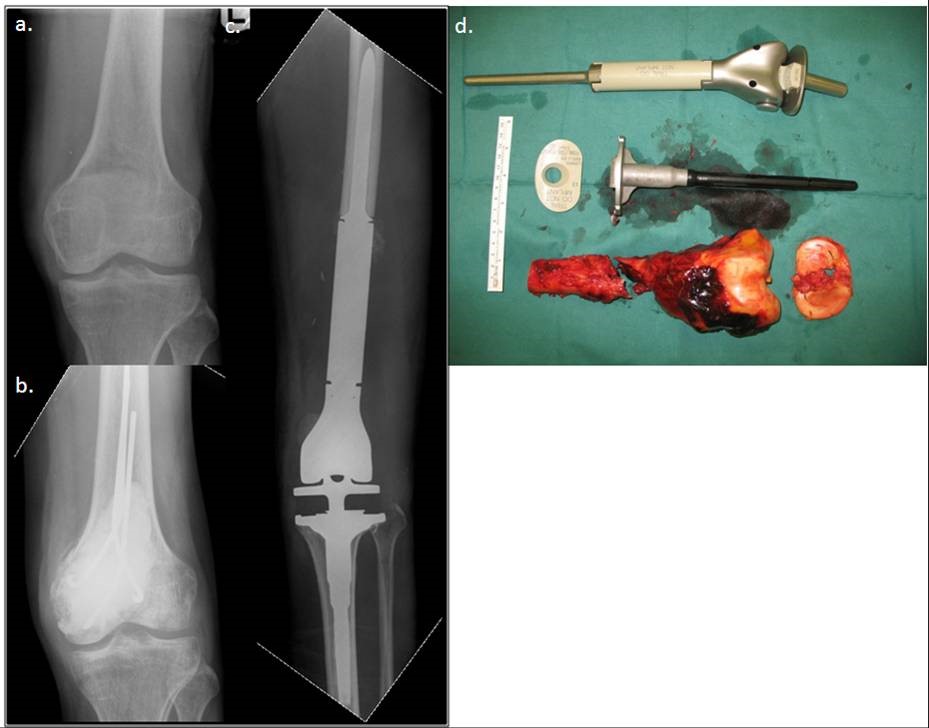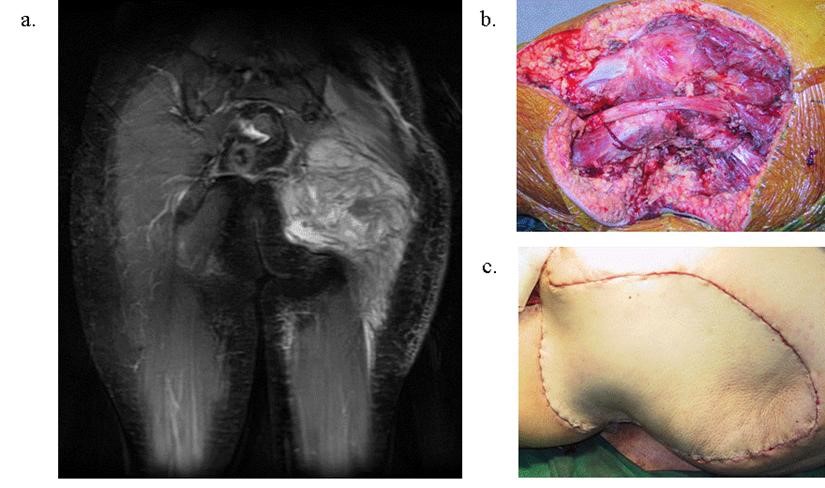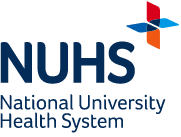Primary cancers of the bones
Also known as bone sarcomas, osteosarcomas and chondrosarcomas are the two most common variants. These affect individuals of all ages but in particular people who are in their twenties and sixties.
The challenges in managing these conditions revolve around removal of these tumours in a way that they do not recur, and then reconstruction of the structure to replace the missing anatomical structure and restore function.
The general approaches to reconstruction can be both biological and prosthetic. In biological solutions, the draw is that one is able to reconstruct the missing structure with biological materials and host bone which has a virtually life-long durability. These methods, however, do result in donor site morbidity and have a relatively high early complication rate.
The prosthetic approaches where joints and segments are replaced by metal implants have high patient acceptability and good function but are subject to wear and tear (Figure 1). 
Figure 1. This patient had an osteosarcoma of the lower femur (a).
This was biopsied and stabilised and the patient underwent chemotherapy for 9 weeks (b).
The tumour was then resected with oncological sound techniques (i.e. margins of resection were clear of tumour) and reconstructed with a tumour megaprosthesis (c). The tumour is replaced with a prosthesis which resembles the lost bone (d). The patient was able to bear weight and walk soon after surgery.
Primary cancers of the soft tissues
Also known as soft tissue sarcomas, liposarcomas and malignant fibrous histiocytomas more commonly occur in adulthood whereas rhabdomyosarcomas and synovial sarcomas occur in childhood.
The specific ability of the orthopaedic oncologists is in his ability to resect these tumours primarily to save life and yet secondarily reconstruct defects in a way that maintains function. In addition, resections are done in a way that facilitates radiation therapy that is often used in these conditions (Figure 2). 
Figure 2. This tumour recurred after two previous resections in a non-musculoskeletal oncology specialised unit in an overseas centre (a).
When cancers in other parts of the body spread to the bone and soft tissues, these structures become compromised. As a result, patients develop fractures that do not heal and they become invalid. This in turn reduces their life expectancy.



















